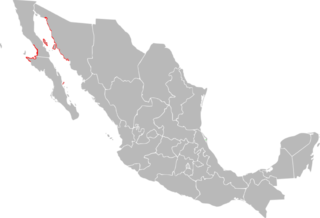
Author: Carlos Bartolomé
Fish-eating bat
Order : Chiroptera
Family : Vespertilionidae
Subfamily : Vespertilioninae
Species : Myotis vivesi
The Fish-eating bat is listed as Vulnerable (VU), considered to be facing a high risk of extinction in the wild, on the IUCN Red List of Threatened Species
Namings for the fisheating bat
A young / baby of a fisheating bat is called a 'pup'. A fisheating bat group is called a 'colony or cloud'.Countries
MexicoFish-eating bat habitats
Marine Coastal / Supratidal, Marine Coastal / supratidal - Coastal Caves / Karst, Marine Neritic, Pelagic and Sea Cliffs and Rocky Offshore IslandsSome facts about the
Fish-eating bat
Adult weight : 0.025 kg (0.055 lbs)
Maximum longevity : 10 years
Litter size : 1
Body mass : 0.025 kg (0.055 lbs)
Facts about the fish-eating bat
Fish eating bats are able to detect a fin sticking out of the water a mere millimeter!
At least one species of fish-eating bat is known from the Caribbean area, and another inhabits certain rocky islands in the Gulf of California.
Diet Fruit eating bats like ripe fruit Meat eating bats eat small creatures like frogs and mice Fish eating bats are able to pick small fish out of the water.
Fish eating bats are piscivores.
The islands of the Gulf are, of course, relatively rich in endemics: 12 plant species and 6 additional subspecies are restricted to the islands; 65 mammal subspecies, 15 species and one genus of fish-eating bats are restricted to them; and more than 30 species or subspecies of reptiles are endemic to one or
The fish-eating bat is only found along the coast of the Gulf of California. (Full text)
Fish Eating Bats Fish eating bats are extremely skilled (Full text)
More animals beginning with F
